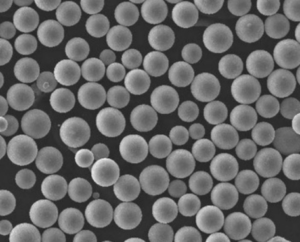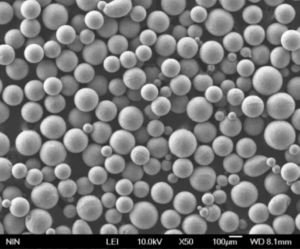耐火金属粉 は、現代材料科学の魅力的で不可欠な要素であり、さまざまなハイテク産業で重要な役割を果たしている。これらの材料は、熱や摩耗に対する卓越した耐性で知られており、要求の厳しい用途において貴重な存在となっています。この包括的なガイドでは、耐火性金属粉末の世界に深く潜り込み、その種類、組成、特性、用途などを探ります。
耐火金属粉末の概要
耐火性金属粉末は、融点が非常に高く、耐摩耗性、耐腐食性、耐変形性に優れた元素に由来する。これらの金属には、タングステン、モリブデン、タンタル、ニオブ、レニウムなどが含まれる。これらの金属は、航空宇宙、原子炉、高温炉など、過酷な条件に耐える材料を必要とする環境で利用されている。
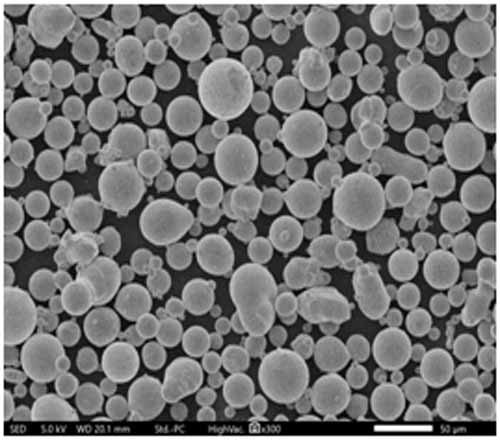
耐火金属粉末の種類
耐火性金属粉末を完全に理解するために、いくつかの具体的な種類とそのユニークな特性を詳しく見てみましょう:
| メタル | 説明 |
|---|---|
| タングステン(W) | 最高の融点と密度で知られ、高温用途に最適。 |
| モリブデン (Mo) | 優れた熱伝導性と低熱膨張性で、電子機器や照明に使用される。 |
| タンタル (Ta) | 耐食性が高く、医療機器や化学処理装置に使用されている。 |
| ニオブ | 高い延性と超伝導性を持ち、超合金やエレクトロニクスに使用される。 |
| レニウム | 高い融点とユニークな電気特性で、ジェットエンジンや電子機器に使用されている。 |
| ジルコニウム(Zr) | 耐食性と強度に優れ、原子炉や医療用インプラントに使用されている。 |
| ハフニウム(Hf) | 中性子吸収率が高く、原子炉や航空宇宙部品に使用される。 |
| バナジウム (V) | 強度と耐熱性に優れ、超合金や工具に使用される。 |
| クロム(Cr) | 優れた硬度と耐食性を持ち、コーティングや超合金に使用される。 |
| チタン(Ti) | 強度対重量比が高く、航空宇宙、医療、工業用途に使用される。 |
構成 耐火金属粉末
耐火性金属粉末の組成は、その性能にとって極めて重要である。これらの金属は、特定の特性を高めるために他の元素と組み合わされることが多い:
| メタル | 構成 | プロパティの強化 |
|---|---|---|
| タングステン | 純またはNi、Fe、Cuとの合金 | 加工性と強度が向上。 |
| モリブデン | 純粋またはTi、Zr、Cとの合金 | 耐クリープ性と強度が向上。 |
| タンタル | 純粋またはW、Hfとの合金 | 耐食性と強度が向上。 |
| ニオビウム | 純またはTi、Alとの合金 | 超伝導性と強度の向上。 |
| レニウム | 純粋またはMo、Wとの合金 | 熱安定性と強度が向上。 |
耐火金属粉末の特性
耐火性金属粉末は、高性能用途に適したユニークな特性を示す:
- 高い融点: 酷暑を伴う用途には不可欠。
- 並外れた硬度: 耐久性と耐摩耗性を提供する。
- 高密度: ストレス下での強さと安定性に貢献する。
- 耐食性: 過酷な環境下でも長寿命を確保。
- 優れた熱伝導性と電気伝導性: 電子機器や高温用途に重要。
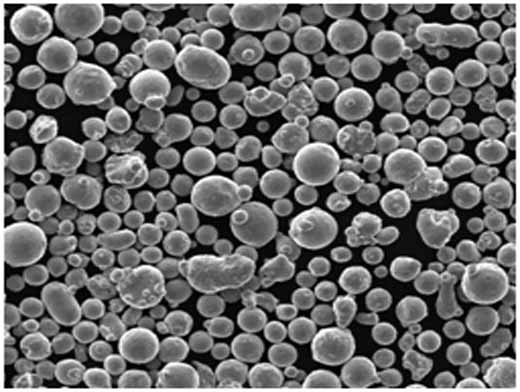
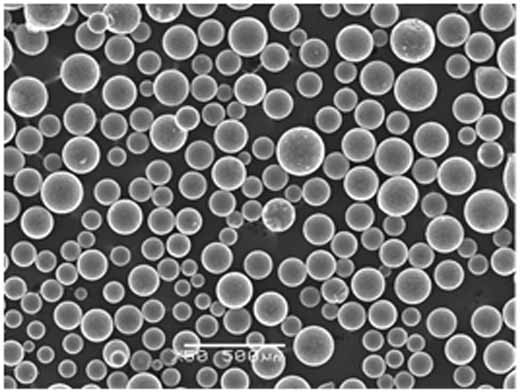
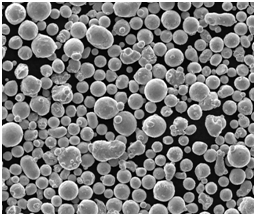
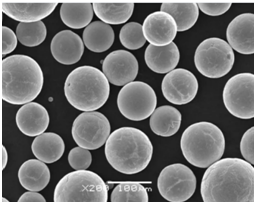
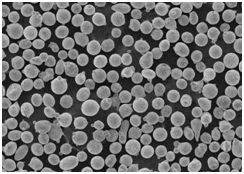
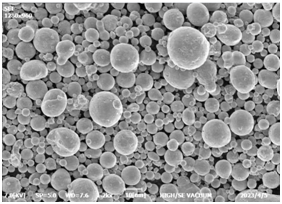
耐火金属粉末の用途
耐火金属粉末は、その顕著な特性により、様々な産業で使用されている:
| 産業 | 申し込み |
|---|---|
| 航空宇宙 | ジェットエンジン部品、ロケットノズル、ヒートシールド。 |
| エレクトロニクス | 半導体デバイス、フィラメント、接点 |
| メディカル | 手術器具、インプラント、歯科器具 |
| 原子力 | 原子炉部品、放射線遮蔽、燃料被覆管。 |
| 化学処理 | 耐食装置、触媒、反応容器。 |
| インダストリアル | 切削工具、金型、耐摩耗コーティング。 |
仕様、サイズ、等級、規格
耐火性金属粉末の仕様と規格を理解することは、その用途にとって極めて重要である:
| メタル | サイズ(ミクロン) | グレード | 規格 |
|---|---|---|---|
| タングステン | 1-100 | W1、W2、W3 | ASTM B777、ISO 4497 |
| モリブデン | 1-50 | Mo1、Mo2、TZM | ASTM B386、ISO 5755 |
| タンタル | 1-40 | Ta1, Ta2 | ASTM B708、ISO 13782 |
| ニオビウム | 1-60 | Nb1, Nb2, Nb3 | ASMB393、ISO13782 |
| レニウム | 1-20 | Re1、Re2 | ASTM B708、ISO 13782 |
サプライヤーと価格詳細
信頼できるサプライヤーを見つけ、価格を理解することは、調達にとって不可欠である:
| サプライヤー | メタル | 価格(kgあたり) | 連絡先 |
|---|---|---|---|
| グローバル・タングステン | タングステン | $250 | [email protected] |
| 中西部モリブデン | モリブデン | $150 | [email protected] |
| タンタル供給 | タンタル | $300 | [email protected] |
| ニオブの供給源 | ニオビウム | $200 | [email protected] |
| レニウム・レア | レニウム | $400 | [email protected] |
耐火金属粉末の利点と限界
耐火性金属粉末には多くの利点がある一方で、いくつかの制限もある:
| メリット | 制限事項 |
|---|---|
| 高温耐性 | 高コスト |
| 優れた機械的強度 | 機械加工が難しい |
| 優れた耐食性 | 数に限りがあります |
| 良好な電気および熱伝導性 | 重くて濃い |
| 長持ちし、耐久性がある | 取り扱い中に起こりうる健康被害 |
耐火金属粉末の比較
さまざまな耐火物金属粉末を選択する際には、その特性と特定の用途への適合性を比較することが重要です:
| メタル | 融点 (°C) | 密度 (g/cm³) | 耐食性 | 熱伝導率 (W/m-K) | 用途 |
|---|---|---|---|---|---|
| タングステン | 3422 | 19.25 | 素晴らしい | 173 | 航空宇宙、エレクトロニクス、照明 |
| モリブデン | 2623 | 10.28 | グッド | 138 | エレクトロニクス、ガラス溶解、照明 |
| タンタル | 3017 | 16.65 | スーペリア | 57 | 医療機器、化学処理 |
| ニオビウム | 2477 | 8.57 | グッド | 54 | 超合金、エレクトロニクス、医療 |
| レニウム | 3186 | 21.02 | 素晴らしい | 48 | ジェットエンジン、エレクトロニクス、化学 |
具体的な分析 耐火金属粉末
それでは、いくつかの主要な耐火物金属粉末について、そのユニークな特性、用途、利点に焦点を当てながら、その詳細を掘り下げてみましょう。
タングステン粉末
タングステン粉末は、融点と密度が非常に高いことで有名です。そのため、極端な温度や機械的ストレスに耐える材料を必要とする用途に最適です。タングステンは、一般的にジェットエンジン部品のための航空宇宙、フィラメントのための電子機器、および放射線遮蔽のための医療機器に使用されています。
モリブデン粉末
モリブデン粉末は、優れた熱伝導性と低熱膨張率で知られています。これらの特性により、ヒートシンクやトランジスターなどの電子機器、照明やガラス溶解産業での用途に適しています。モリブデンは高温でも強度を維持できることが大きな特長です。
タンタル粉末
タンタル粉末は、その優れた耐食性で際立っています。そのため、化学処理や医療用途で非常に重宝されています。タンタルは、手術器具やインプラント、腐食性の高い物質を扱う機器によく使用されます。その耐食性は、長寿命と信頼性を保証します。
ニオブ粉末
ニオブ粉末は、その高い延性と超伝導性で注目されている。そのため、航空宇宙や電子機器に使用される超合金に不可欠な成分となっている。ニオブの超伝導特性は、低温と効率的な性能の維持が重要な医療用画像診断装置や粒子加速器に利用されている。
レニウムパウダー
レニウム粉末は、その高い融点とユニークな電気特性で珍重されている。過酷な条件に耐える材料を必要とする高温タービンエンジンや電子機器に使用されている。レニウムの卓越した熱安定性と強度は、過酷な環境において重要な材料となっています。
比較分析:タングステンとモリブデンの比較
タングステンとモリブデンを比較した場合、どちらの金属も高温耐性を提供しますが、タングステンの方が融点が高い(3422℃対2623℃)ため、超高温用途では有利です。しかし、モリブデンは熱伝導性に優れ、密度が低いため、効率的な放熱と軽量化が必要な用途ではモリブデンの方が適している。
比較分析:タンタルとニオブの比較
タンタルとニオブは共に耐食性に優れているが、タンタルの方が密度が高い(16.65g/cm³対8.57g/cm³)ため、重量をあまり気にせず、最大限の耐食性が要求される用途に適している。一方、ニオブは高い延性と超伝導性を持つため、先端エレクトロニクスや航空宇宙用途に適している。
比較分析:レニウム対タングステン
レニウムとタングステンはどちらも高温用途に使用されるが、レニウムは独自の電気特性と高い価格帯により、特殊な電子機器やジェットエンジンに最適である。タングステンは密度が高く、価格も安いため、一般的な高温・高強度用途により実用的である。
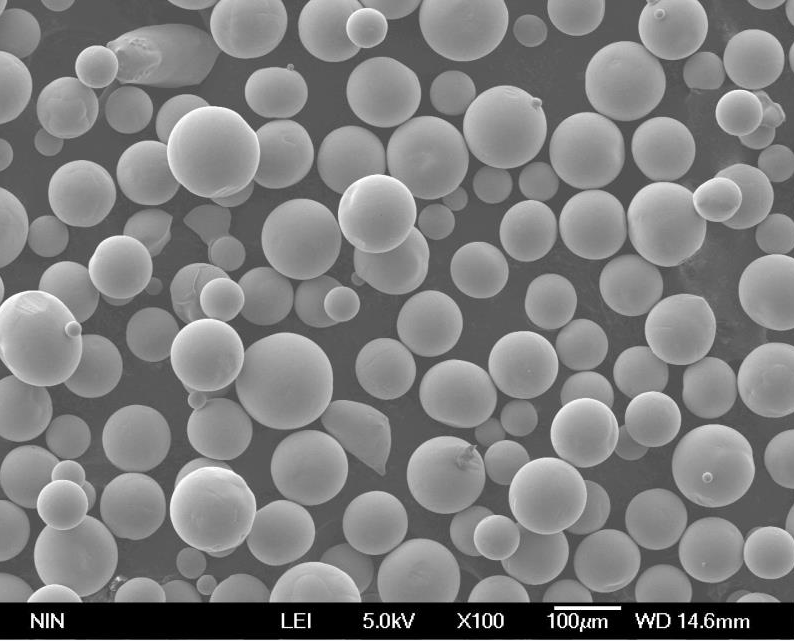
よくある質問
| 質問 | 回答 |
|---|---|
| 耐火性金属粉末とは? | 耐火性金属粉末は、高い融点を持ち、熱、摩耗、腐食に対して卓越した耐性を持つ材料です。 |
| 耐火性金属粉末の一般的な用途は? | 航空宇宙、電子機器、医療機器、原子炉、化学処理装置などに使用されている。 |
| 耐火性金属粉末はどのように製造されるのか? | これらは通常、機械的合金化、化学蒸着、金属酸化物の還元などの工程を経て製造される。 |
| タングステン粉の主な特性は? | タングステン粉末は、その高い融点、密度、強度で知られ、高温用途に最適です。 |
| なぜモリブデン粉が電子機器に使われるのか? | モリブデン粉末は熱伝導性に優れ、熱膨張率が低いため、ヒートシンクや電子部品に適している。 |
| タンタル粉の耐食性は? | タンタル粉末は、過酷な化学環境下でも腐食に耐える保護酸化物層を持っています。 |
| ニオブ粉末は航空宇宙用途でどのように使用されているのか? | ニオブ粉末は、その高い強度と延性により、ジェットエンジンやその他の高性能航空宇宙部品用の超合金に使用されている。 |
| エレクトロニクスにレニウム粉末を使用するメリットは何ですか? | レニウム粉末はユニークな電気特性と高い熱安定性を持ち、高性能電子部品に最適です。 |
| 耐火性金属粉末の取り扱いに伴う健康リスクはありますか? | はい、一部の耐火性金属粉末は、吸入または摂取した場合に健康被害をもたらす可能性があります。取り扱いおよび加工時には適切な安全対策を講じる必要がある。 |
| 耐火金属粉末はどこで購入できますか? | 耐火金属粉末は、Global Tungsten、Midwest Molybdenum、Tantalum Supply、Niobium Sources、Rhenium Rareなどの専門業者から購入することができる。 |
結論
適切な耐火物金属粉末の選択は、用途の具体的要件によって異なります。融点、熱伝導性、耐食性、密度、コストなどの要素を考慮してください。これらの特性を理解することで、十分な情報に基づいた決定を下し、プロジェクトを成功に導くことができます。
